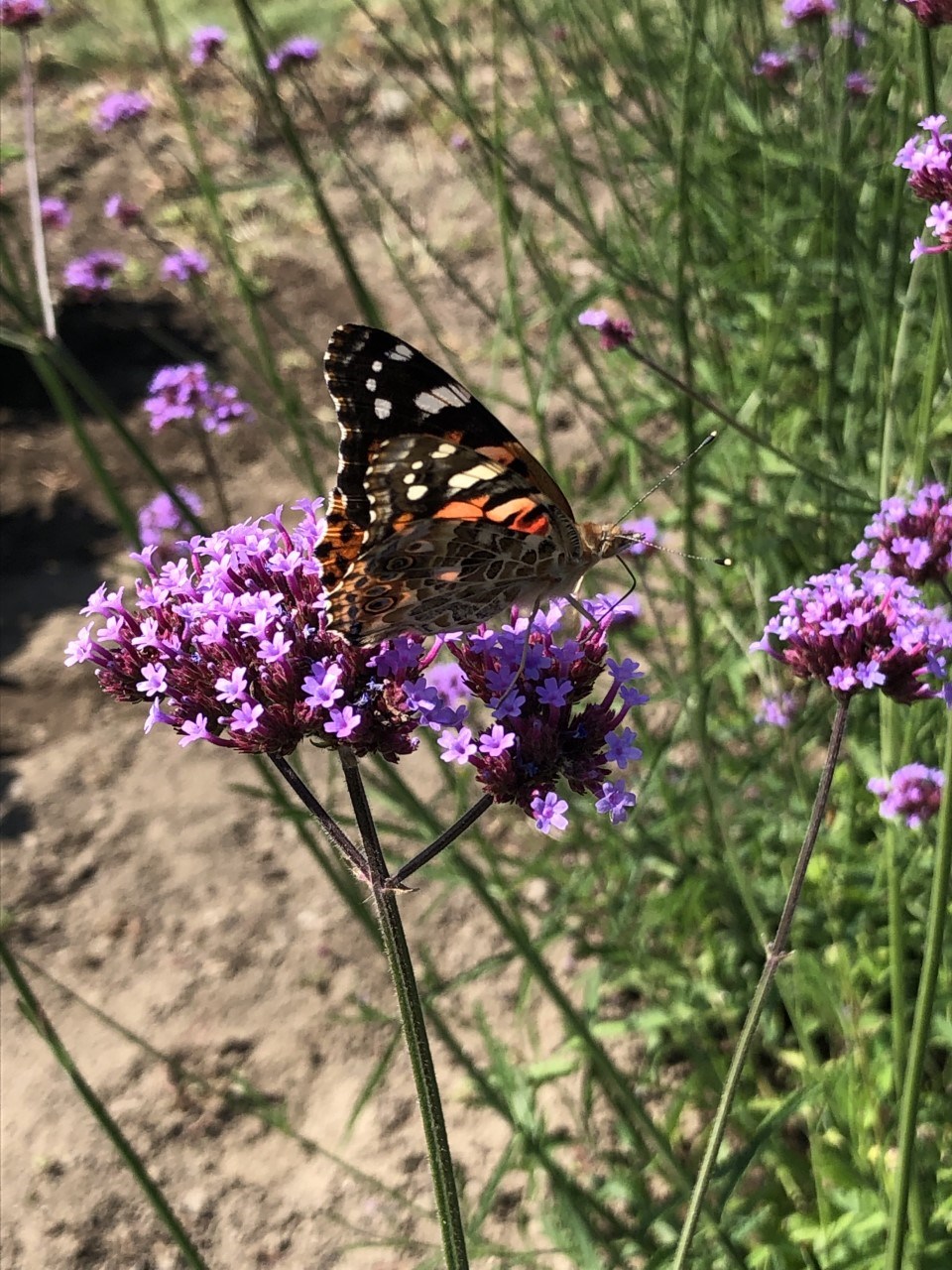The following column was submitted to the Tri-City News from Brian Minter — master gardener, best-selling author, Order of Canada recipient and co-owner of Minter Country Garden Store.
We are slowly learning the true value of insects in our gardens, as friends, pollinators and natural predators for some of our more troublesome pests.
Others, like butterflies, also add an element of grace and beauty to our gardens.
The downside of attracting any insect to our gardens is the appetites of their larval stage. They need certain plants for food and reproduction.
If you can stand a few nibbles out of your plants and can tolerate caterpillars climbing along branches, then you're halfway there. You will also have to reduce your use of insecticides and rely more on organic methods to control pest problems.
The provincial backyard habitat program has pamphlets that specify butterflies' needs.
Butterflies and moths go through the miraculous process of metamorphosis in their life cycle from egg to larva, to pupa, to adult. The larval stage may not be as attractive as the beautiful adult flitting from flower to flower, but to have butterflies, we must have caterpillars first! Each species lays its eggs on specific plants — those on which its caterpillars must feed.
The caterpillar of the Anise Swallowtail butterfly, for instance, feeds on members of the carrot family, such as parsley, fennel, carrot, dill, and Queen Anne's Lace.
Other Swallowtail larvae require the leaves of aspen, poplar, willow, alder and ash. Swallowtail larvae are a 'solitary' variety, rather than the 'social' ones that appear in large groups.
These larvae can be rather alarming in appearance, developing through four moults as they eat, grow, and expand out of their skin to an eventual size of four centimetres. If you find some larvae in your garden, consider them a special gift — not a threat!
Soon they will complete their metamorphosis and become beautiful butterflies.
Viola odorata leaves are larval food for Fritillary butterflies. If you notice leaves that have been chewed and rolled around caterpillars, don't be too speedy in removing the damaged leaves. Fritillaries winter as tiny caterpillars, so allow the leaves to die back naturally without trimming.
The Red Admiral and Tortoiseshell butterflies require nettles for their larval food. If you can tolerate a corner with a few of these plants, you will be providing butterfly habitat.
Adult butterflies also need moist, muddy spots and warm rocks on which to sun. These features could be added easily to a habitat garden. Keep in mind, however, that butterflies and moths are very vulnerable to cats, and a protected location is important.
The added bonus of attracting butterflies is the fact that they share many of the same plants with hummingbirds. By attracting one, you are also bringing the other to your garden.
The following is a partial list of herbs, perennials and shrubs that are the most beneficial for attracting butterflies.
Herbs:
1. Fennel (Foeniculum spp.)
2. Lavender (Lavendula angustifolia)
3. Lemon Balm (Melissa officinalis)
4. Peppermint/Spearmint (Mentha spp.)
5. Bergamont (Monarda didyma)
6. Sweet Marjoram (Origanum marjorana)
7. Parsley (Petroselinmum spp.)
8. Upright Rosemary (Rosemarinus officinalis)
9. Thyme (Thymus spp.)
10. Sage (Salvia spp.)
Perennials:
1. Yarrow (Achillea spp.)
2. Columbine (Aquilegia spp.)
3. Echinacea spp.
4. Globe Thistle (Echinops ritro)
5. Goldenrod (Solidago spp.)
6. Cone Flower (Rudbeckia spp.)
Shrubs:
1. Wild Blue Lilac (Ceonothus velutinus)
2. Salal (Gaultheria shallon)
3. Low Oregon Grape (Mahonia nervosa)
4. Mock Orange (Philadelphus lewisii)
5. Red Flowering Currants (Ribes sanguineum)
6. Native Rose (Rosa nutkana)
7. Red Elderberry (Sambucus racemosa)
8. Snowberry (Symphoricarpos albus)
9. Butterfly Bush (Buddleia crispa)
In the evening, you can even attract night-flying moths by planting a white garden using pastel flowers and evening-blooming plants like nicotiana and evening-scented stocks (Matthiola). These moths are not the ones that enter your home and get into carpets and clothes. The larval stage of many moths are the orange and black striped 'woolly bear' and 'fuzzy yellow bear' caterpillars which are garden friends.
Even though we must make a few important adjustments to the traditional way we garden, attracting butterflies to our gardens is both an interesting and environmentally friendly activity.




